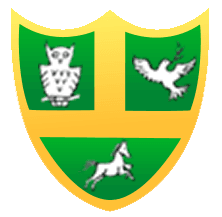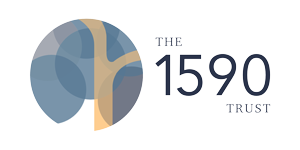Computing
Article 28: Every child has the right to an education
Intent: What we are trying to achieve in our curriculum?
Our curriculum is designed to meet and address the needs of the children who attend our school. It is ambitious, inclusive, broad and balanced. It is designed to provide a progression of knowledge, skills and vocabulary with clear end points, at the end of key phases in school. The threads ‘Be Ready, Be Respectful and Be Safe’ provide the intent of our curriculum design and are implemented throughout Computing lessons.
Characteristic |
What do we want to develop in our children at Kirklevington? |
What does this look like in our School? |
Be Ready |
Be Ambitious – aim high, exposure to experts and role models, challenge provided in teaching knowledge, skills and vocabulary |
- Children are taught to become ‘computer experts’ by learning a wide range of skills when using technology and developing a comprehensive understanding of E-safety.
- Children are inquisitive in their use of technology, developing their use of an expanding range of programs, apps and physical resources.
- Pupils are taught transferrable skills that they can use later in life. We strive to develop technological curiosity and provide pupils with fun, inspiring computing links within our curriculum.
- Computing vocabulary is a focus in lessons and ensures children develop their understanding in discussions and independent / group work.
- We develop children’s understanding and passion for using technology for a wide range of different purposes.
- Computing is promoted within all areas of the curriculum. We aim to deliver a broad and balanced curriculum, where technology is used effectively to support learning and provide children with the opportunity to try new things.
- Pupils learn about important role models in computing and how they have impacted positively to the rise in the use of computing, including in the past 30 years.
- Pupil voice is an integral part of learning.
- Our inclusive computing curriculum progressively introduces knowledge, skills and vocabulary, with clear end points and expectations.
|
|
Be Independent – Prepared for now, the next steps and for life |
- Children develop greater independence when using a wide range of technology.
- They learn to confidently use the school technology (such as iPads and laptops), power on/off, sign in/out and use programs and email.
- Pupils are given roles within their class, which involve the managing and organisation of devices.
- Pupils learn how to use tablets and computer-based systems to perform a large number of processes and tasks.
- As job-transferrable skills are vital for children’s futures, we ensure that all children are computer-literate, including learning typing skills and using word processing, data manipulation and presentation programs and tools.
- Children understand how computing and technology can be used effectively in everyday life.
- Children in Key Stages 1 and 2 complete their homework through Seesaw, which prepares them for secondary school.
- They are also able to put on photos and videos of their accomplishments which develops their skill of uploading media to a platform.
|
|
Be Resilient – confident, develop self-regulation, well-being strategies and be problem solvers |
- Children are taught a range of strategies to develop resilience when using technology, including de-bugging and using trial and error to solve problems.
- Children are creative when using technology and able to demonstrate their personality through their work (for example, when creating presentations).
- Experimentation is encouraged and pupils teach their peers new skills, developing their self-confidence and fluency when articulating about computing.
- Children learn how to care for their own (and others) mental health whilst using the Internet and social media (particularly in Upper Key Stage 2).
- Pupils use a variety of apps to complete coding tasks at different levels of difficulty and solve problems. The de-bugging element of coding is important to develop in computing coding.
- Challenges enable children to investigate why something is not working correctly, allowing them to practise their de-bugging and ‘trial and error’ sequences. They can then explain their reasoning for how the problem has been solved.
|
|
Be Respectful |
Respectful behaviours – towards ourselves, our peers and others |
- Pupils at Kirklevington learn how to be respectful and accepting of all others online.
- They learn how relationships can be developed safely and respectfully through interactions online.
- They study situations where behaviour is unacceptable towards others, linking to PSHE themes, and learn how to communicate respectfully online.
- Children are able to communicate online with their teachers via Seesaw regarding their work and well-being. This also develops their skills of speaking to others (commenting) on a platform.
- We model and educate children to use technology positively, responsibly and safely.
|
|
Respect rights -RRSA – Understand our rights, how they affect our lives and rights of children globally, celebrating differences |
- Computing lessons are often linked to specific ‘Rights of the Child (UNICEF)’.
- Children learn how computing is used throughout the world and how some children do not have access to the same level of technology.
|
|
Respect the environment – our school, the community and the wider world |
- Children ‘tidy up’ after using technology and how to ensure devices are protected and ready for future use.
- Children learn how computing can be a real driving force when communicating within the community.
- Pupils are taught about new technological advancements in the world and how they are having an impact in the way we live our lives.
- They use technology to create digital presentations on how to protect the environment.
- Seesaw is used throughout the curriculum, allowing children to make links between the use of technology and saving on paper and printing.
|
|
Be Safe |
Keep ourselves safe – know how to report concerns and worries, including with friendships |
- Children learn the appropriate actions to take, and know who to speak to, if they are worried or unsure about anything they experience online.
- As children are now using online communication tools at a younger age, they are taught about their choices online, how to digitally speak to others safely and the importance of their digital footprint.
- Children learn about ‘Childline’ and how they can be contacted if they are worried.
- Children are taught about stranger danger online and how people can easily disguise themselves.
- Children learn about information that is personal to them and should not be shared online.
-
|
|
Being safe in the school and community – Knowledge about, our families, the school, the local context and wider world |
- Children learn to keep their personal information private, including their passwords.
- They understand which media is appropriate and inappropriate to view at home, within school and in the community.
- Children learn how to spot the signs that someone online is attempting to find out their person information.
|
|
Being safe online –Using technology for the right reasons and knowing its limitations |
- Our Computing curriculum is progressive and ensures that children are fully equipped with the knowledge and skills they need to meet their needs when using technology, particularly as many have access to their own personal devices.
- All children are aware of the choices available when using technology and are vigilant to the unknown when using the internet, social media, apps and gaming platforms.
- Cyber-bullying is studied in detail and steps to deter this are learned in all age groups.
- They understand how online safety is paramount when using technology and who to report any worries and concerns to.
- Children follow school rules when using technology.
- Children learn about how developments in computing have changed the way that people live their lives (for better and for worse) and understand the limitations of ‘living their lives through a screen’.
|
Implementation
Within our school, pupils will gain experience in working with different types of technology. As the world is becoming more and more technology driven, our pupils must know how to use both tablets and computer-based systems to perform a number of tasks. We will provide opportunities for this. Pupils will use a variety of apps on tablets to complete coding tasks at different levels of difficulty and solve problems of an appropriate level. The de-bugging element of coding is important to each child’s development in computing coding. Pupils will also use apps to create and edit multimedia.
As job-transferrable skills are vital for children’s futures, we will use a combination of computers and other technology to ensure that all children are computer-literate, including the basic skills of typing and using basic word processing, data manipulation and presentation programs and tools.
In tandem with our PSHE work, the children will all learn about online safety, particularly on social media apps.
Impact
By the end of Year 6, all children will feel confident in using a range of technology effectively and independently and have a strong understanding of the benefits of using technology in a responsible way. Children will also be fully aware of the risks of social media and networking apps, and know the appropriate actions to take should they feel worried or unsure. All children will leave Kirklevington with some job-transferrable skills which they will use frequently within their further education and employment.

